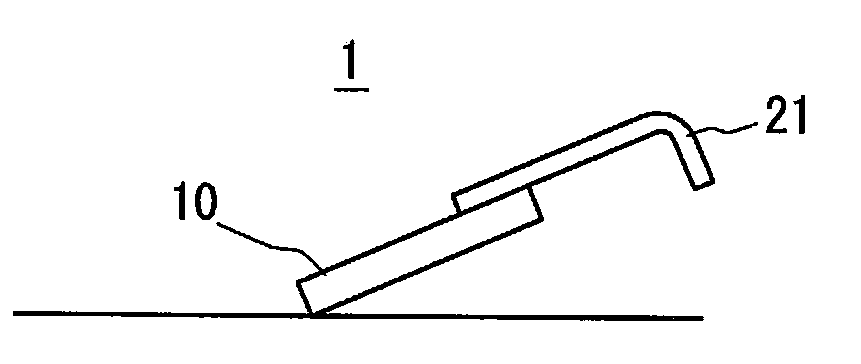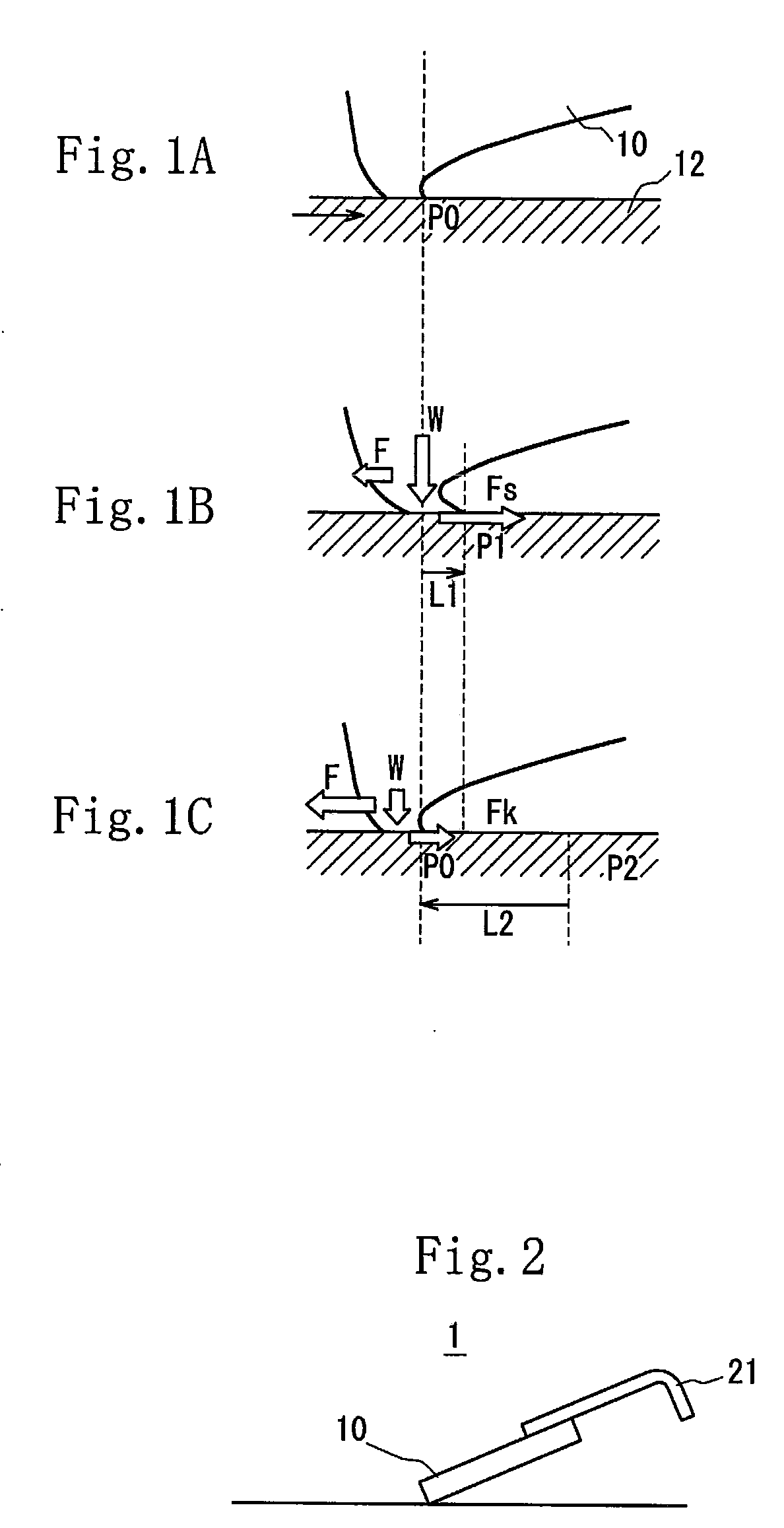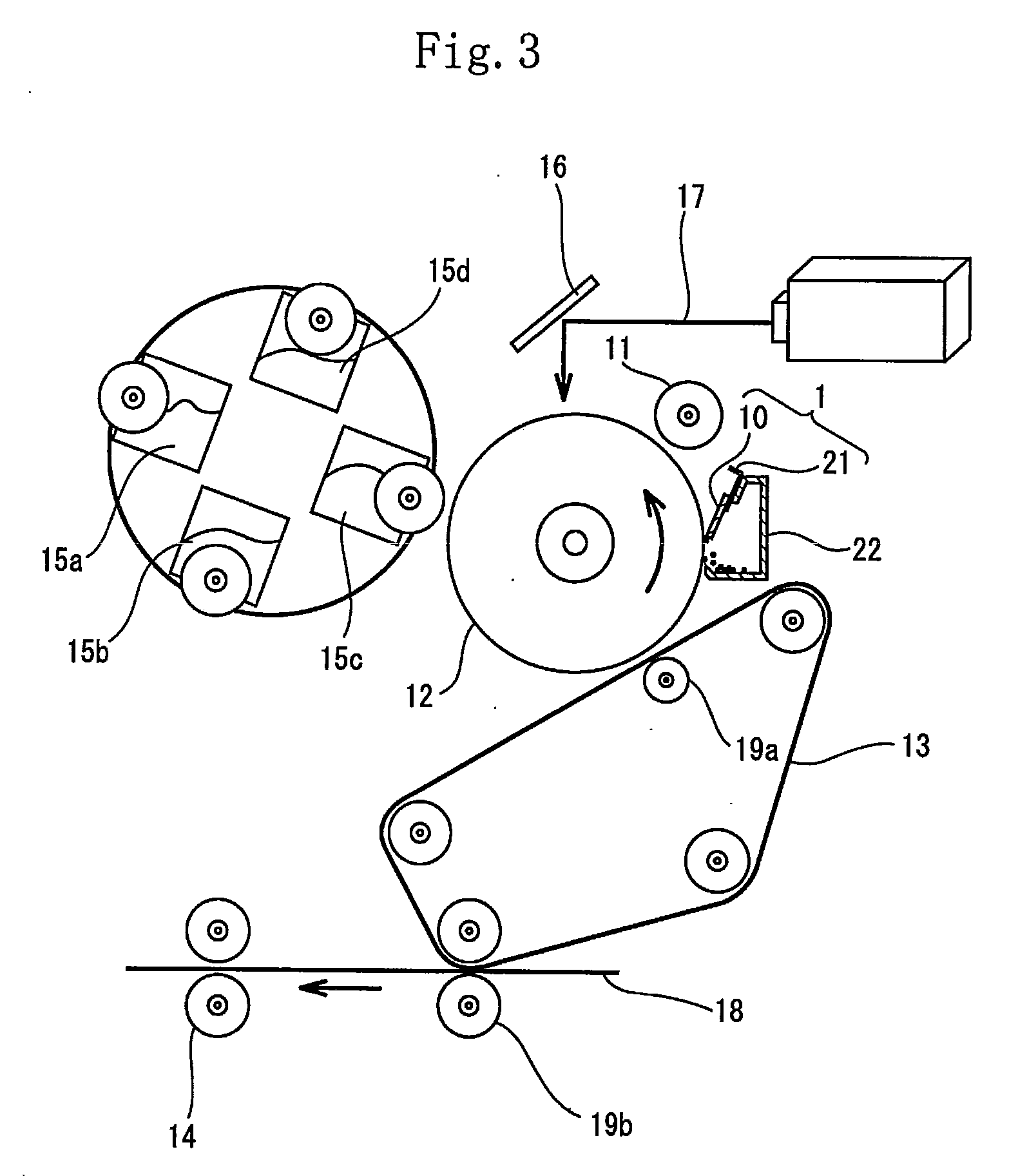Cleaning blade for image-forming apparatus
- Summary
- Abstract
- Description
- Claims
- Application Information
AI Technical Summary
Benefits of technology
Problems solved by technology
Method used
Image
Examples
examples 1 through 9
AND COMPARISON EXAMPLES 1 THROUGH 7
[0140]After the mixing amount of each of the rubber component, the PTFE resin powder or the ETFE resin powder both of which are the thermoplastic fluororesin powder, and the fillers shown in tables 1 and 2 was measured as shown in tables 1 and 2, the components were supplied to a rubber kneading apparatus such as a biaxial extruder, an open roll, a Banbury mixer or a kneader. Thereafter they were kneaded for five to six minutes while they were being heated to 80° C. to 120° C.
[0141]The obtained mixture and the crosslinking agent, the mixing amount of which is shown in tables 1 and 2 were supplied to the rubber kneading apparatus such as the open roll, the Banbury mixer or the kneader. Thereafter they were kneaded for five to six minutes while they were being heated to 80° C. to 90° C.
[0142]After each of obtained thermoplastic elastomers was set in a die, it was press-vulcanized at 155° C. to 175° C. for 10 to 30 minutes to obtain a sheet having a t...
PUM
 Login to View More
Login to View More Abstract
Description
Claims
Application Information
 Login to View More
Login to View More - R&D
- Intellectual Property
- Life Sciences
- Materials
- Tech Scout
- Unparalleled Data Quality
- Higher Quality Content
- 60% Fewer Hallucinations
Browse by: Latest US Patents, China's latest patents, Technical Efficacy Thesaurus, Application Domain, Technology Topic, Popular Technical Reports.
© 2025 PatSnap. All rights reserved.Legal|Privacy policy|Modern Slavery Act Transparency Statement|Sitemap|About US| Contact US: help@patsnap.com



